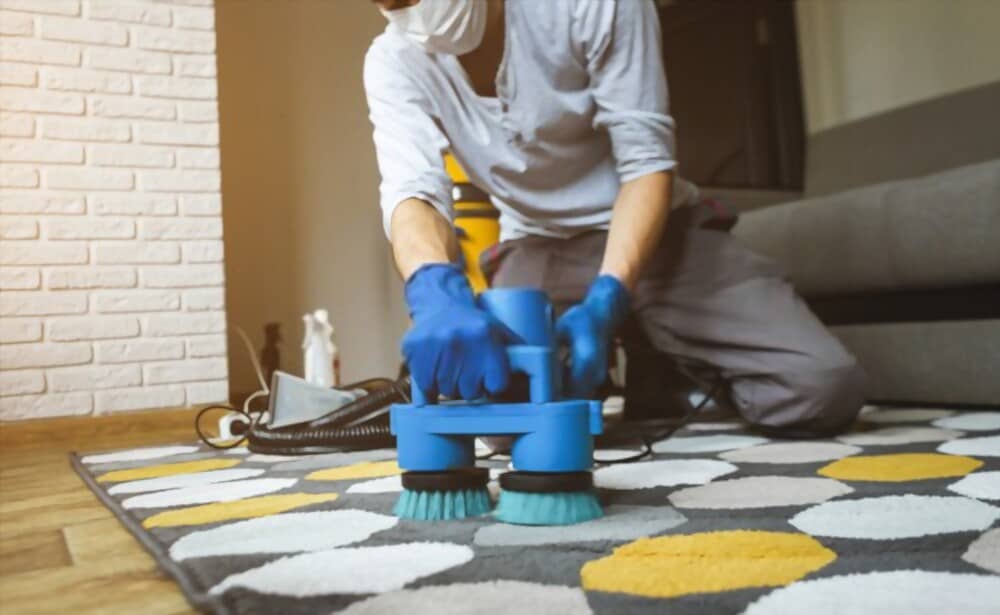
Dry cleaning at home is a time and money saver, as the carpets can be cleaned right away. You will be able to clean food stains and pet hair easily. Additionally, you will be able to set your own schedule and have more free time on hand.
By following a few simple steps, you can effortlessly dry-clean the carpet at home.
The first step in dry cleaning the carpet is to use the dry cleaning compound. The market is full of dry cleaning compounds. Select the one you find the best. Now take the agent and start sprinkling it on the carpet. You can also use a sifter for sprinkling.
If you are using the sifter, then hold it 3-5 inches above the ground. Don't overload the shifter. Fill it out properly.
Once you have done sprinkling the dry cleaning agent on the carpet, use a scrubber to scrub it. Don't go too hard on it. Gently scrub it all over the carpet. If you are not comfortable using the scrubber, then use a brush.
Brush the carpet in a back and forth direction. If you are using a nylon brush, then you can hang it with thread. It will prevent you from bending again and again. Once the scrubbing process is complete, let it sit for around 25-30 minutes. During this time, the dry cleaning agent will draw germs from the carpet.
You can safely walk on the carpet if you want.
Touch the carpet and feel whether the compound is completely dried or not. If you observe that the carpet is dry, use the vacuum cleaner to remove the dry cleaning compound. Vacuum the carpet in a back and forth direction. You may need to vacuum the carpet 2-3 times for neat cleaning.
Encapsulant is a liquid carpet cleaning agent. Without a doubt, an encapsulant is super-classy when it comes to cleaning the carpet. But the risky point is, if used in a vaster amount then it can damage the carpet.
Read the manufacturer's guidelines regarding encapsulant dilution. Dilute the encapsulant in hot water. After making the diluted solution, fill it in the spray bottle, and spray it on the carpet. Encapsulant is the best agent you can use to kick off tough carpet stains.
Don't waterlog the carpet, only damp it. In those parts of the carpet where you see visible tough stains, spray a little more there. Now is the time to leave the carpet. Leave for around 15 minutes. After 15 minutes, use a brush or scrubber to remove the stain. Remember to scrub the carpet gently.
The last step in carpet dry cleaning is to vacuum the carpet. Gently vacuum the carpet for 2-3 rounds and Ta-Da! Your dry cleaned carpet is ready.
While dry-cleaning the carpet, make sure to wear gloves all the time. And lastly, don't use an excessive amount of encapsulant on the carpet.

Harry Virk is the director of CleaningPro Auckland. He has years of experience in the cleaning industry and his company is expert at providing exceptional cleaning services in Auckland. He has a passion for helping people and making sure that their homes are clean, tidy, and ready for visitors.




